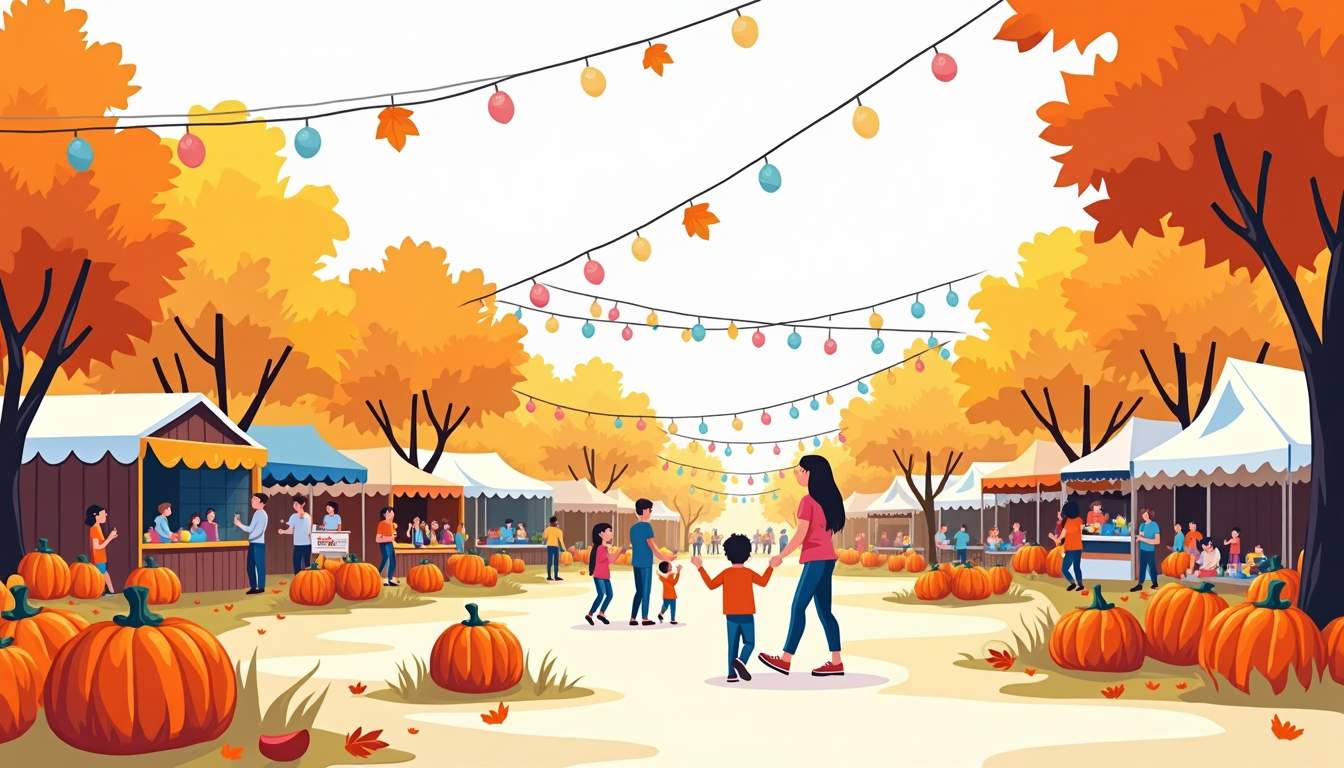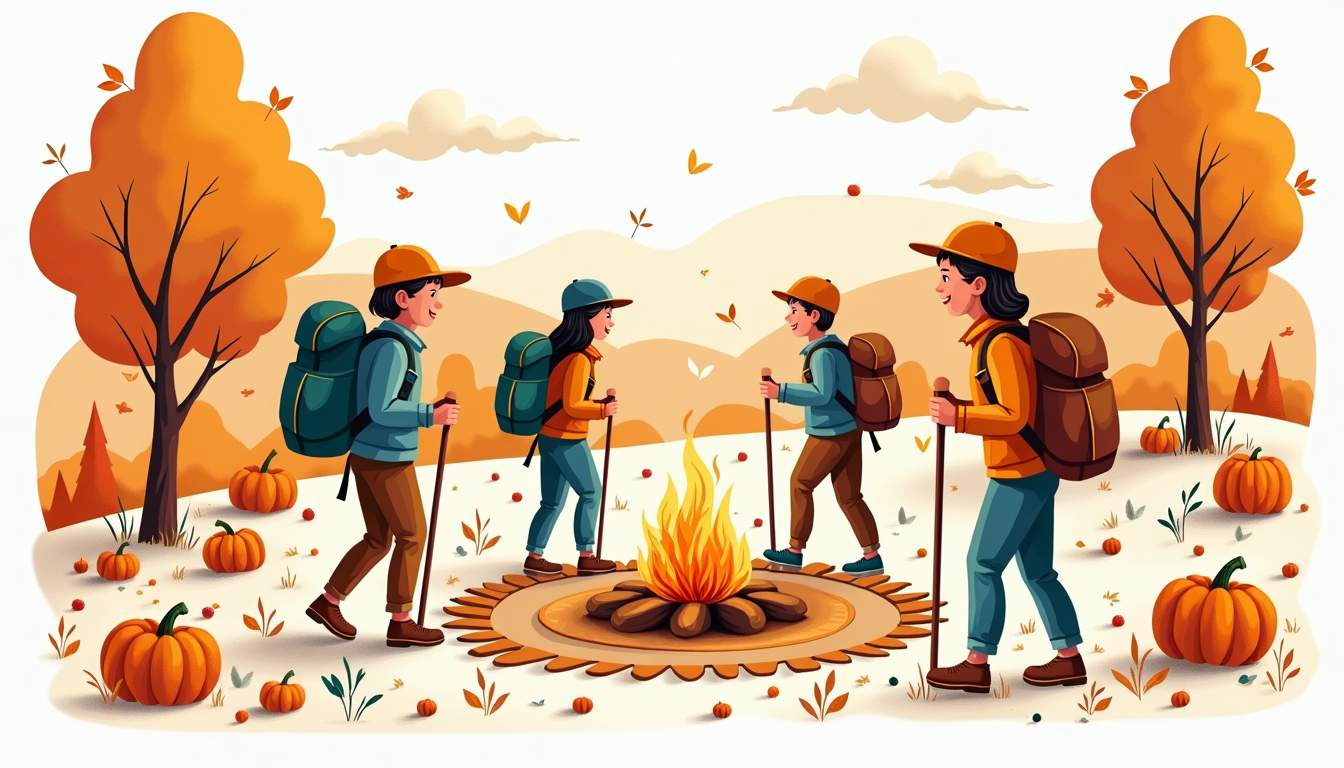
Autumn and summer each bring a unique palette of experiences for families. One season bursts with sunny days, water play and long evenings, while the other wraps the neighborhood in crisp air, pumpkins, hayrides and cozy gatherings. This article gathers ideas for family-friendly fall festivals and summer activities that appeal to children of all ages, keep adults entertained and create lasting memories without breaking the bank.
Before diving into specific events and activities, it's useful to think about a few planning priorities: safety, cost and accessibility. Families with young children or members with mobility issues will benefit from choosing venues with clear signage, accessible restrooms and seating areas. For events in either season, check weather forecasts and have a backup plan for rain or heat waves.
Budget considerations can significantly shape the experience. Many communities host free or low-cost festivals, while other activities like pumpkin patch visits or amusement parks may carry admission fees. Look for community calendars, library listings, and local parks departments for free offerings. Season passes or multi-visit tickets often make sense for families who plan to attend several events.
Pack essentials like water, sunblock for summer outings and a small first-aid kit for both seasons. In autumn, layers are key: mornings may be chilly but afternoons can warm up. For festivals with animals or hay, bring wet wipes and hand sanitizer. During summer events, schedule outdoor activities for early morning or late afternoon to avoid peak heat, and always watch for signs of heat exhaustion in young children.
Fall festivals can offer sensory-rich experiences: bright foliage, crunchy leaves, seasonal foods and interactive activities. The following ideas balance tradition and novelty, offering something for toddlers and teenagers alike.

Visiting a pumpkin patch is a fall rite of passage. Look for patches that include tractor-pulled hayrides, corn mazes tailored to different age groups and photo-friendly displays. Some farms offer themed weekends with music, face painting, or petting zoos. For families with very young children, choose patches with flat paths and shaded rest areas.
Harvest festivals and farmers markets combine seasonal produce with live music, craft booths and local foods. These events are great for teaching children about where food comes from and for sampling late-summer and autumn produce like peaches, apples, squash and root vegetables. Interactive cooking demonstrations or kids’ activity booths can keep little hands busy while adults browse.
County fairs and small-town fall fairs often include kid-friendly rides, craft competitions, and simple games. Look for fairs that offer family wristbands or discounted early-bird tickets. Craft areas where kids can make leaf art, decorate gourds or mold clay are especially engaging for hands-on learners.
A quieter but equally rewarding option is organized leaf-peeping walks or guided nature hikes. Parks and nature centers sometimes host family-oriented walks that explain seasonal changes, animal behaviors and plant identification. These outings are low-cost, educational and a great way to burn off energy before settling into a cozy evening.
Community trick-or-treat events, trunk-or-treats hosted by churches and businesses, and family-friendly haunted houses designed for children can be less overwhelming than large urban trick-or-treating. Costume parades, pumpkin decorating contests and sanitized candy stations are popular features that keep the event focused on fun and safety.
Summer invites long days, spontaneous play and opportunities to explore both the neighborhood and farther afield. Activities range from simple backyard fun to full-day excursions. These suggestions focus on low-stress planning and maximum enjoyment for a wide age range.
Time at the water is a hallmark of summer. Whether at a sandy beach or a calm lake, plan for breaks in the shade, frequent rehydration and appropriate flotation devices for children. Pack simple sand toys, a picnic, and a small umbrella or canopy. For families seeking structure, look for beaches with lifeguards, rental options for kayaks or paddleboards, and educational nature programs.
Public splash pads are an inexpensive way to cool off and are often designed for younger children. For older kids, water parks offer slides, wave pools and lazy rivers, along with food vendors and shaded seating. Buying tickets online in advance can save money and shorten waiting times during peak summer weekends.
Many towns host free outdoor movie screenings and summer concert series in parks. Bring lawn chairs, blankets and a picnic. These events are a relaxed way to enjoy warm evenings with minimal planning. Check listings for family-friendly movie choices and early start times so younger children can attend without getting overtired.
Camping is a classic family activity that doesn’t require roughing it to be enjoyable. Tent camping at a developed campground offers restrooms, running water and nearby trails. Backyard camping can be just as exciting: set up a tent, roast marshmallows, tell stories and watch the stars. Add a scavenger hunt or nature journal activity to keep kids engaged.
Summer street fairs often feature food trucks, performers, parades and vendor booths. These provide a lively atmosphere and a chance to try new foods and crafts. Look for family-centric programming such as puppet shows, magic acts, children’s theater and interactive art installations.
Combining activities into a day trip can maximize fun and reduce travel fatigue. Pairing a morning hike with an afternoon festival or visiting a beach near a coastal town’s summer carnival creates a balanced day that offers variety without constant planning.

Some farms offer U-pick fruit options in summer—berries, cherries, and peaches can be fun for kids to gather. Pair a morning of fruit picking with a picnic lunch and a visit to a nearby playground or nature center. Picking provides an educational opportunity about seasonal produce and supports local agriculture.
Historic downtowns often host summer sidewalk sales, markets and demonstrations. A walking tour combined with an ice cream stop and a visit to a small museum or historic site can make for a pleasant day. Many towns also host reenactments or craft workshops tailored to children.
Zoos and aquariums typically offer summer programs, feedings and animal talks that are especially captivating for kids. Arrive early to avoid the hottest part of the day and use shaded exhibits and indoor viewing areas to rest. Memberships or reciprocal zoo passes can lower costs for families who plan frequent visits.
Both seasons can surprise with uncooperative weather, but there are plenty of indoor and adaptable options that still feel special and festival-like.
Children’s museums, science centers and indoor play gyms offer hands-on exhibits that entertain and educate. Many institutions feature rotating exhibits and special summer or fall programming that align with festival themes, such as harvest science or water play exhibits.
Create a mini festival at home when weather or schedules prevent outdoor plans. Host a backyard harvest party with pumpkin carving, apple cider tasting and a leaf-decorating station, or stage a summer luau with simple decorations, tropical fruit skewers and limbo. Themed playlists and a few decorations can make a normal day feel special.
Organize a cooking or craft workshop tailored to seasonal themes: make homemade jam in summer from picked berries, or hold a fall baking session focused on apple crisps and muffins. Craft sessions can include making leaf prints, painting gourds or assembling nature collages.
Documenting adventures helps sustain the joy long after the season ends. Simple and creative ways to capture memories work well for all ages.

Create age-appropriate travel journals or photo challenges to encourage observation and curiosity. For younger kids, a stamp or sticker system for each activity completed adds excitement. Older children can be given a camera or phone to document their favorite moments and later create a digital album.
Leaves, shells, pretty stones and pressed flowers make tangible reminders of seasonal outings. Combine these into a scrapbook or display them in clear jars labeled with date and location. Use a simple lamination or clear contact paper to preserve pressed leaves and keep them from crumbling.
Volunteering at a festival, participating in a community clean-up after an event, or helping to staff a neighborhood booth teaches civic responsibility and strengthens community ties. Many festivals welcome family volunteers for short shifts, which can also provide behind-the-scenes learning experiences.
Seasonal activities are richest when approached with flexibility and an eye toward what will make the day enjoyable rather than perfect. Shorter events and built-in downtime keep younger children from getting overwhelmed, while multi-option days allow families to pivot if plans change.
Choose a mix of structured events and freeform play, use community resources to stretch the budget, and keep safety and accessibility in mind. Whether it’s the slow burn of a crisp autumn festival or the electric energy of a summer carnival, thoughtful planning helps ensure that family time becomes a highlight of the season.
After exploring the best fall festivals and summer activities for creating lasting family memories, imagine enjoying these seasonal moments right at home. Tennessee National offers a premier gated community with resort-style amenities perfect for families who value both adventure and comfort. From scenic nature trails to a Greg Norman Signature Golf Course and a private marina, every day brings new opportunities for connection and fun. Schedule a private tour today to see how Tennessee National can be the backdrop for your family’s unforgettable experiences. Schedule your private tour and start making memories daily.